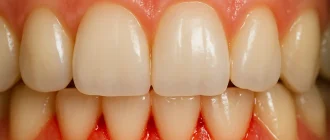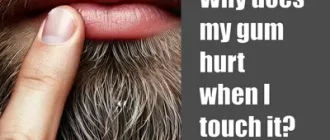Discovering a bump on the gum below a broken tooth can be quite alarming. Whether it’s painful or painless, it is essential to understand the possible causes behind this condition and explore potential remedies.
We will delve into the common causes of a bump on the gum below a broken tooth and discuss some effective remedies to alleviate discomfort and promote oral health.
Causes
A bump on the gum below a broken tooth can be triggered by various factors, including:
- Infection: When a tooth suffers a fracture or breaks, it can create an opening through which bacteria can enter. This can lead to an infection in the gum tissue surrounding the broken tooth, resulting in a painful bump.
- Abscess: A bump on the gum below a broken tooth may indicate the formation of an abscess, which is a pocket of pus caused by a bacterial infection. Abscesses can be extremely painful and require immediate dental attention.
- Gum disease: If the broken tooth affects the gum line, it can contribute to gum disease. This condition, also known as periodontal disease, can cause inflammation and the development of a bump on the gum.
- Trauma or injury: A physical injury to the mouth, such as a blow or accident, can cause a broken tooth and subsequently lead to a bump on the gum.
Remedies
Addressing a bump on the gum below a broken tooth may involve a combination of professional dental treatment and home remedies. Here are some remedies that may provide relief:
- Dental consultation: Visit a dentist as soon as possible to accurately diagnose the cause of the bump and receive appropriate treatment. The dentist may recommend dental procedures such as a root canal, tooth extraction, or gum treatment, depending on the severity of the condition.
- Warm saltwater rinses: Rinse your mouth with warm saltwater several times a day to help reduce swelling and cleanse the affected area. Mix half a teaspoon of salt with 8 ounces of warm water and swish it around your mouth for about 30 seconds before spitting it out.
- Over-the-counter pain relievers: Non-prescription pain medications like ibuprofen or acetaminophen can help alleviate pain and reduce inflammation associated with a bump on the gum.
- Maintain good oral hygiene: Brush your teeth gently twice a day with a soft-bristled toothbrush and floss daily, taking care to avoid the affected area. This will help prevent further infection and promote overall oral health.
- Avoid irritating foods: Opt for a soft diet and avoid foods that can irritate the broken tooth or bump on the gum. Hard, crunchy, and sticky foods should be temporarily avoided until the issue is resolved.
Conclusion
A bump on the gum below a broken tooth can be uncomfortable and indicate an underlying dental issue. Seeking professional dental advice is crucial to diagnose and treat the underlying cause of the bump effectively. In the meantime, practicing good oral hygiene, using saltwater rinses, and taking over-the-counter pain relievers can provide temporary relief.
Remember, it is always better to address dental problems promptly to prevent further complications and maintain optimal oral health.






